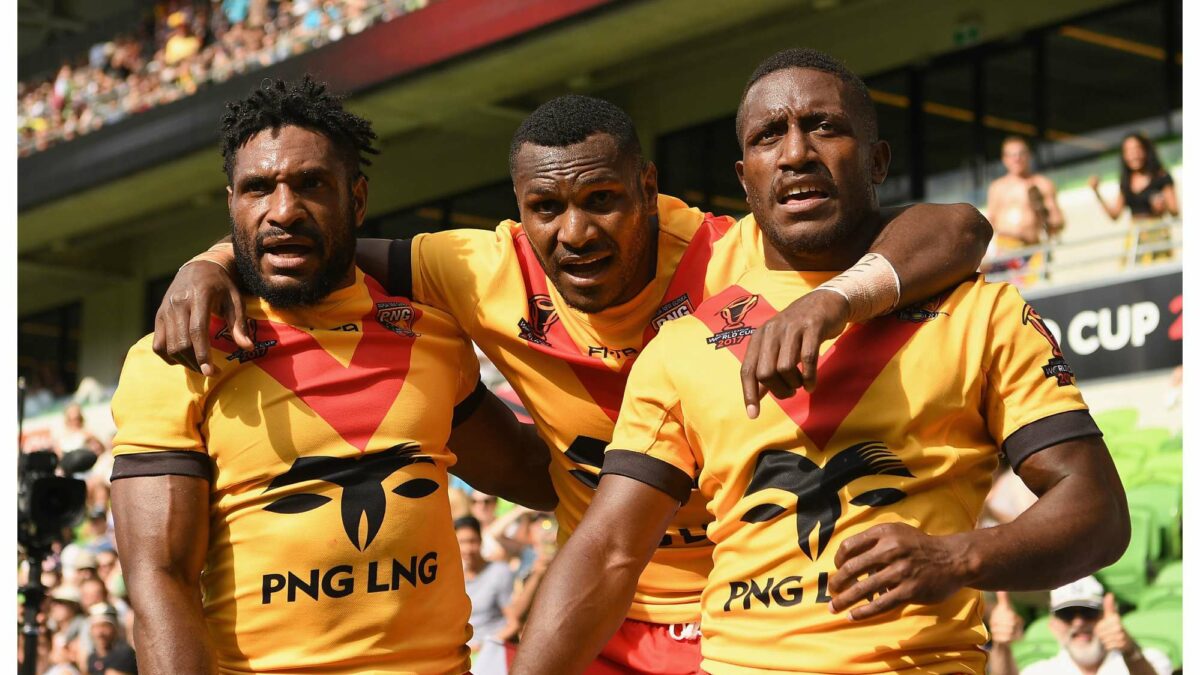If you are scratching your rugby league noggin and wondering how on earth an NRL expansion team in Papua New Guinea would actually work, never fear, you are far from alone.
With a monstrous price tag put on the entire exercise and some obvious geo-political repercussions behind the Federal governments enthusiasm to partner up with the NRL, many a rugby league fan might simply be asking if there is perhaps a more simple, cost effective and less convoluted way to expand the national competition.
In essence, the entire situation has become a little farcical, with the government set to take what was reported as an in-principle agreement with the ARL to Cabinet in September and ARL Commission chair Peter V’landys effective pouring cold water on reports that expansion into PNG was effectively a ‘done deal’.
Subsequently, agitated clubs have presented their cases to the ARLC; no doubt fearful of player drain and their portion of the financial pie generated by the current and future broadcast deals being cut.
A total of $170 million appears to be the figure doing the rounds, which translates to each club effectively requesting an additional $10 million to ensure they are able to maintain viability and competitiveness as vast sums are pumped into the proposed new team to be based in Port Moresby.
Reading between the lines, the overall aim appears to be to bump up the number of teams to 20, with a Perth-based club and second team in New Zealand the hot tips in terms of the second and third locations.
The Roar covered the nuts and bolts and ramifications of finding appropriate identity for the Perth-based team last week, and it is relatively simple to believe that both could be built and become successful in the short term.
However, PNG is a completely different kettle of fish.

The PNG Kumuls wait on a try decision at the 2017 Rugby League World Cup quarter-finals. (Photo by Quinn Rooney/Getty Images)
The fundamental feasibility of a venture north is questionable. Just how on earth could a swathe of NRL players be lured away from the comfort and settled nature of their current existences, to hitch their wagons in a country effectively being used as a political pawn in the region.
Well, with money of course and no doubt there will be plenty of it flying around if the rubber stamp is actually given to the Commission to go ahead with what seems a rather bold and somewhat hopeful endeavour.
Not only will the cash be required to build infrastructure and the tangible fabric of what a football club looks like, it will also have to entice a smattering of top end talent to make the move.
The Dolphins entered the competition with the names required to make an immediate impact. Herbie Farnworth, Jamayne Isaako, Felise Kaufusi, Jesse and Kenneath Bromwich, as well as Hamiso Tabuai-Fidow are the calibre of player around which a club can be built, not to mention the man coaching them in their inaugural season.
The notion of big names such as these shifting partners, kids, business interests and lives north for a handful of seasons and a slightly bigger pay packet seems unlikely. Or perhaps I am thinking far to altruistically and lacking the scepticism required when it comes to athletes looking for the next big pay day?

The Dolphins signed a quality playing group within two NRL seasons, including Herbie Farnworth. A PNG team may have trouble doing the same. (Photo by Bradley Kanaris/Getty Images)
Either way, whilst the figures tossed around might be concrete in nature and the ARLC seemingly passionately committed to the concept, the actual practicalities of realising what still remains a dream are complete unknowns.
Could it be that the parties involved remain content to march ahead, without actually considering whether the competition and nation might be better served by another approach.
Having 20 teams in the national competition has been tried before, with questionable success. The talent pool of players will be strained as it was previously, the willingness of players to move is a major hurdle, the increased travel costs for all clubs cannot be underestimated and the ultimate valuable of a ninth and potentially tenth game per week will be unknown until the new broadcast deal is struck in 2027.
With charities in Australia accepting record numbers of requests for assistance from families doing it tough after a post-COVID cash-in by retailers and a lengthy period of inflationary pressure and interest rate increases, the question around spending $600 million on rugby league expansion is a fair one.
What a South Australian or Tasmanian with little or no interest in rugby league makes of the government’s desire to part with such a sum to promote and expand a game essentially played on one coast of the mainland intrigues me.
There is something a little disorganised, dishevelled, a sense of chaos almost, as words like PNG, Perth, Bears and Jets are thrown around, as though there is water-tight grand plan to which the ARLC is working.
Personally, I don’t think there is and the constant delays in announcing the road map forward suggest that could in fact be the case.
